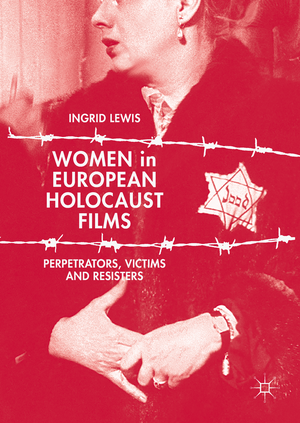Women in European Holocaust Films: Perpetrators, Victims and Resisters
Autor Ingrid Lewisen Limba Engleză Hardback – 31 ian 2018
| Toate formatele și edițiile | Preț | Express |
|---|---|---|
| Paperback (1) | 516.37 lei 6-8 săpt. | |
| Springer International Publishing – 4 iun 2019 | 516.37 lei 6-8 săpt. | |
| Hardback (1) | 689.59 lei 6-8 săpt. | |
| Springer International Publishing – 31 ian 2018 | 689.59 lei 6-8 săpt. |
Preț: 689.59 lei
Preț vechi: 811.28 lei
-15% Nou
Puncte Express: 1034
Preț estimativ în valută:
132.01€ • 135.77$ • 109.52£
132.01€ • 135.77$ • 109.52£
Carte tipărită la comandă
Livrare economică 19 februarie-05 martie
Preluare comenzi: 021 569.72.76
Specificații
ISBN-13: 9783319650609
ISBN-10: 3319650602
Pagini: 277
Ilustrații: XIII, 278 p. 27 illus.
Dimensiuni: 148 x 210 x 22 mm
Greutate: 0.54 kg
Ediția:1st ed. 2017
Editura: Springer International Publishing
Colecția Palgrave Macmillan
Locul publicării:Cham, Switzerland
ISBN-10: 3319650602
Pagini: 277
Ilustrații: XIII, 278 p. 27 illus.
Dimensiuni: 148 x 210 x 22 mm
Greutate: 0.54 kg
Ediția:1st ed. 2017
Editura: Springer International Publishing
Colecția Palgrave Macmillan
Locul publicării:Cham, Switzerland
Cuprins
1. Introduction.- 2. Part I Women and the Holocaust: The Silenced Gender? 2. The Silenced Gender Paradigm.- 3 Breaking the Silence on Women Perpetrators.- 4. Idealised or Ignored: Female Victims of the Holocaust.- 5. Invisible Resistance: Women’s Contribution.- 6. Part II The Cinematic Representation of Women as Perpetrators and Accomplices of Nazism 6. Violent, Erotic, Brainwashed: Stereotypes of Female Perpetrators in Holocaust: Films between 1945 and 2000.- 7. Uneven Representations: Complex Men and Poorly Drawn Women.- 8. “Ordinary Women” as Perpetrators in 21st Century Holocaust Cinema.- 9. Part III Female Victims in Holocaust Films: From Universalised Portrayals to Recovered Memory 9. Universalised Victims: Jewish Women in Early Holocaust Films.- 10. The Jewish Woman as Epitome of Holocaust Victimhood in the 1960s.- 11. Newcomers to Holocaust Cinema: Women in Crisis, Second Generation, Sexual Abuse and Other Victims of Persecution.- 12. The Trauma of (Post)Memory: Women’s Memories in the Holocaust Cinema of the New Millennium.- 13. Part IV Gendering Heroism: The Role of Women in Filmic Discourses About Resistance 13. Patriarchal Perspectives on Jewish Female Heroism.- 14. The Role of Heroines in Coming to Terms with the Past in Germany and France.- 15. Gendered Disparities in the Portrayal of Rescuers.- 16. Conclusion.
Notă biografică
Dr Ingrid Lewis is Assistant Lecturer in Film and Theatre Studies at Dundalk Institute of Technology, Ireland. She is author of the book chapter ‘Ordinary Women’ as Perpetrators in European Holocaust Films (Palgrave Macmillan, 2015) and has taught within the discipline of Film Studies at Universities in Croatia, Ireland and Italy.
Textul de pe ultima copertă
This book considers how women’s experiences have been treated in films dealing with Nazi persecution. Focusing on fiction films made in Europe between 1945 and the present, this study explores dominant discourses on and cinematic representation of women as perpetrators, victims and resisters. Ingrid Lewis contends that European Holocaust Cinema underwent a rich and complex trajectory of change with regard to the representation of women. This change both reflects and responds to key socio-cultural developments in the intervening decades as well as to new directions in cinema, historical research and politics of remembrance. The book will appeal to international scholars, students and educators within the fields of Holocaust Studies, Film Studies, European Cinema and Women’s Studies.
Caracteristici
First study to address the representation and discursive construction of women in European Holocaust films Provides a unique multidisciplinary perspective that contributes to European Film Studies, Holocaust Studies and Women's Studies Examines how and why the portrayal of women in European Holocaust films has changed since the end of the war Casts new light on cinema’s function as a discursive intervention into cultural memory and the politics of remembrance Offers a significantly more inclusive account of Holocaust representation of women than has been attempted before
